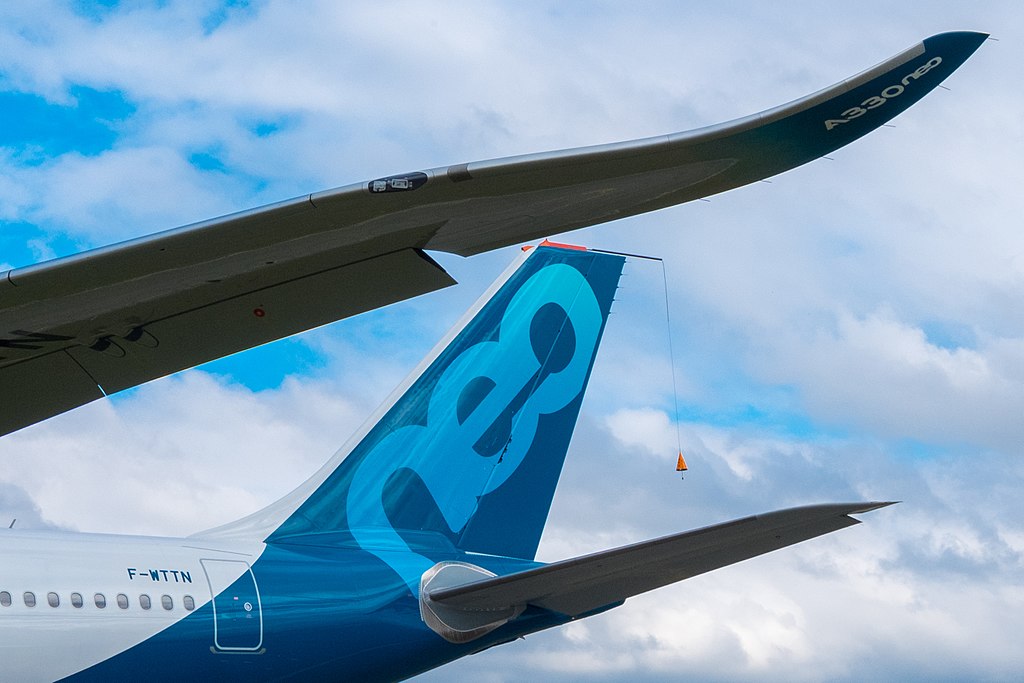Three reasons why A Re-engined Boeing 767 Makes Sense
Boeing’s resources are already stretched
A modernized Boeing 767s offers a low-cost way for Boeing to address a market that is already being cornered by both the A321LR and the re-engined A330 NEO. The ongoing 737 MAX debacle has required significant technical and monetary resources in an attempt to rectify. It is likely that Boeing will have to settle significant lawsuits due to the two crashes of MAX jets and the grounding of the MAX fleets that will extend at least until early 2020 for most operators.
The Boeing 777X program has also experienced delays. While the aircraft has completed some taxi tests (see video above), first flight is delayed until next year due to issues with the engine.
Issues with both the 737 MAX and 777X mean that there are less engineers, less ambition, and possibly even financial limitations making it less likely that Boeing will invest in an all new aircraft at this time.
The upgraded 767 could conceivably be done with two modifications: upgraded engines and longer landing gear to offset the larger engine under the wing. It’s a ‘doable’ modification without the same level of technical and certification risk that an all-new 797 would require.
Commonality with the 767 fleet is a plus
Both airlines and cargo operators still have sizable 767 fleets. An updated 767 with better efficiency means that many of the existing parts and procedures will share commonality. This will result in a common type rating for pilots, similar maintenance procedures, and near-identical ground operations for operators. All a great thing. The decision Boeing will have to make is that the window for bringing an upgraded 767 to market is closing. The Flight Global article states that Boeing could deliver the jet by 2025. If that timeline slips much further, airlines would likely need to replace their existing 767s with other types resulting in an upgraded 767 becoming a much less attractive proposition for existing operators.
If the A330 can do it, we can too!
There is a bit of economic FOMO at play. The Airbus A330 NEO launched in 2014 in an attempt to siphon off 787-8 orders and attract Boeing 767 operators who wanted to upgauge their fleet. At the time, critics pointed out how the aircraft was really just a warmed-over A330 from the 1990s while the 787 was truly 21st century technology. Then the smaller -800 model failed to sell. The outlook was initially bleak even for the -900. The 787 looked like the clear winner. But the past five years have proven positive for the A330NEO. The -900 model has sold fairly well with almost 250 orders so far. Major airlines like Delta and Virgin Atlantic have ordered the jet. They see it as a way to grow their fleet incrementally with enhanced efficiencies instead of adding a whole new model to their fleet.

For Boeing, the A330NEO provides a template for how a revised 767 can prove successful. The updated jet has an opportunity to capture a few orders for operators who have 767s approaching the end of their service life who would otherwise choose a mix of A321NEOs and A330NEOs as a replacement. Boeing also is likely to attract top-off orders from cargo operators and potentially even passenger airlines like United or (gasp) Delta who have sizable existing fleets. And if the economics of the revised 767 prove attractive enough, they may even pick up a new airline or two to operate the jet.
What are your thoughts? Does it make sense for Boeing to rework and re-engine the 767? Share what you think in the comments below…

Loved the article!!
Let’s call it “767MAX” and throw it right into the sea.. As stated, this is a 40 years old design. Slightly younger than the 737, on which the 737MAX is based. Don’t you think an “NMA” should have the “new” in it?
A 767X, using the latest generation engines (leveraging the effort to modify the GEnx engines for the 747-8), the 767-400ER wing and landing gear (to provide greater ground clearance), the 787 cockpit from the KC-46 tanker, and an appropriate fuselage length (likely the -300), along with aerodynamic improvements and material improvements (more composites, more use of aluminum lithium alloys) could offer an aircraft between the size of the Airbus A321neo XLR and the 787-8/A330-800 class aircraft, but considerably more range than the A321XLR’s ~4,000nm.
could be…….
I think that Boeing has such poor management, a toxic leadership culture, has lost their way, and pretty much lost its ability to innovate, this may be their only option. I loved the 767-300/400’s and would like to see some new engines, and some new winglets, along with all the goodies inside.
I think the board is going to be a little gun shy about a 767MAX. I also think that it’s exactly this kind of “it will save us a ton of money” thinking that got Boeing into the fix that it is in. They should focus on designing the most advanced, most efficient, highest quality, safest plane they can possibly build.